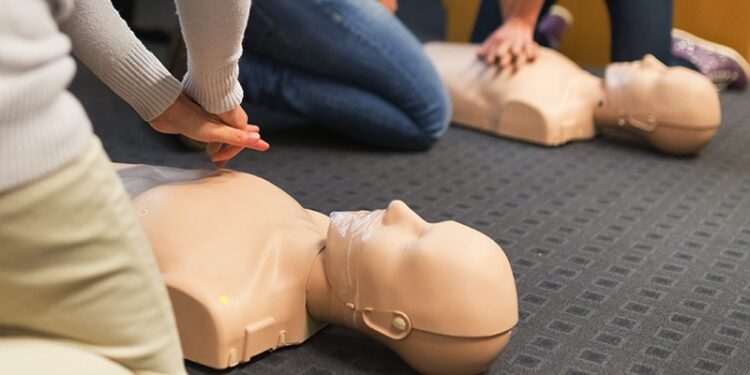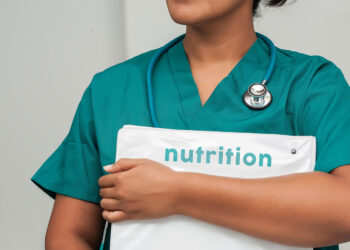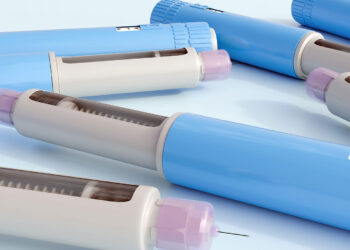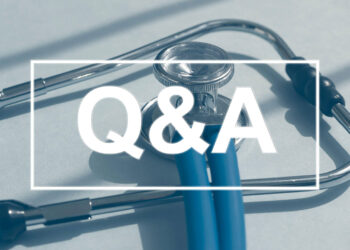An app that alerts bystanders trained in cardiopulmonary resuscitation (CPR) to a nearby out-of-hospital cardiac arrest can increase survival if volunteer responders arrive before emergency medical services (EMS), according to an Australian study.
The analysis of more than 9000 out-of-hospital cardiac arrests in Victoria, published in the Medical Journal of Australia, showed that, after adjustment, the odds of survival to discharge were 37% higher for patients attended by a smartphone-activated volunteer responder (SAVR) before EMS arrived. But survival was not helped if SAVRs arrived after EMS responders.
In events where the SAVRs arrived before EMS, 34.6% of patients were in an initially shockable rhythm by the time EMS arrived, compared to 26.0% of patients where the volunteers did not attend.

“We know patients who are in a shockable rhythm have a much better outcome,” said first author Belinda Delardes, a paramedic and PhD candidate at Ambulance Victoria in Melbourne. Patients receiving CPR from SAVRs were not being brought back to life, she said, “but they’re keeping them with enough circulation that when we arrive, we can do something about it.”
In the 5-year observational cohort study involving 9196 cases of out-of-hospital cardiac arrests, 1158 were attended by volunteer responders who had received an alert via smartphone. In around half of the cases, the volunteers arrived before EMS. When SAVRs arrived before emergency personnel, the odds of bystander CPR being administered were 7.6 times higher, and the odds of bystander defibrillation were 16 times higher than in cases where the volunteers did not attend.
App-Based Alerts
Study participants used an app called GoodSAM, one of several designed to alert voluntary responders to a nearby cardiac arrest. When an eligible cardiac arrest is reported to EMS, the app locates and alerts the three nearest volunteer responders within 500 m in metropolitan areas or 5 k in regional areas. It also shows the location of any nearby publicly available automated external defibrillators (AEDs).

Of note, the app continues alerting nearby volunteers until three people accept the alert, which creates a team, said cardiologist Garry Jennings, MD, chief medical advisor at the Heart Foundation of Australia in Melbourne, who was not involved in the study. “What we’ve found in the most successful events is that people just self-organize, and one person does this, and another person does that, because that’s helpful if you know what you’re doing.”
The program excludes traumatic cardiac arrests or where there are potential safety issues for responders. In some countries, the app includes a video function so dispatchers can assess the scene and, for example, advise if the patient needs to be moved to a firmer surface for resuscitation, although that function was not used in this study.
“Any bystander CPR is going to be better than no bystander CPR,” Delardes said. “The dispatchers walk you through what to do, they count you out, they tell you exactly where to put your palms.”
When the study was first launched, volunteers to the program had to be registered health professionals or members of emergency service organisations. Shortly after the study began, the program was opened to any adult who had completed accredited first aid training, and then expanded further to include anyone who declared ability to provide cardiopulmonary resuscitation and use an AED.
First Moments Crucial
“Every second counts when somebody’s had a cardiac arrest, and if they happen to have the kind of rhythm problem that a defibrillator will revert, then it’s absolutely life-saving,” Jennings said.
“Whilst there’s a lot of steps in what we call the ‘Circle of Hope’ between somebody collapsing and getting to hospital and getting treated and getting home and being looked after afterwards, these first moments are the most important.”
There is growing awareness of the importance of bystander CPR and defibrillation, but many people are still hesitant to use AEDs, Jennings told Medscape Medical News. “People see the AED on the wall but think it must be a medical device and they’ve got to wait for someone who knows how to use it to come.”
The numbers needed to treat to achieve a good outcome were “really low,” Delardes added. “When we’re talking about survival and, for a lot of these patients, possibly 10 or 20 years of living really well, that’s an enormous impact,” she said. “I’m just hoping that we can keep funding programs like this and that we can say to people in our community that it really is worthwhile signing up.”
No funding sources for the study were reported. Delardes and Jennings reported having no relevant financial relationships.
Source link : https://www.medscape.com/viewarticle/early-smartphone-activated-bystander-cpr-can-boost-survival-2025a1000fxy?src=rss
Author :
Publish date : 2025-06-13 18:06:00
Copyright for syndicated content belongs to the linked Source.













